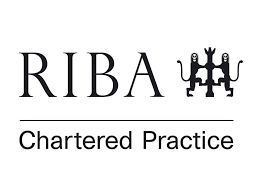Most likely, yes.
Although this is the second most common question we have been asked by clients especially since the Building Safety Act (BSA) came into force; it is also the same question that is not asked as often as it should! There seems to be a misconception along the lines of ‘we are only refurbishing the existing space’ or ‘we are not changing things that much’, which the BSA has brought to the forefront of discussions.
Let’s first clarify that the BSA has not brought any changes to the building regulations themselves, and which works they apply to. The BSA has brought procedural changes introducing clear accountability and transparency for the design and delivery of safe buildings compliant to the existing Building Regulations 2010 (the Regs).
The Regs can be challenging to read and decipher in areas, but it is necessary to determine from the outset if a scheme requires an application for building control approval. In relation to a refurb scheme in a hospital for example, most of the works would fall under the Regs. The reason for that in simple terms is because when you are extending a ‘controlled service or fitting’ which includes existing systems like hot / cold water supply, drainage, and electrical installations, these works fall under the definition of ‘building work’ in the Building Regulations 2010. Therefore, schemes that include such works require a building control application approval.
Extract from the definition of ‘Building Work’ Part 2 The Building Regulations 2010.
Meaning of building work
3.—(1) In these Regulations “building work” means—
(a) the erection or extension of a building;
(b) the provision or extension of a controlled service or fitting in or in connection with a building;
(c) the material alteration of a building, or a controlled service or fitting, as mentioned in paragraph (2);
(d) work required by regulation 6 (requirements relating to material change of use);
(e) the insertion of insulating material into the cavity wall of a building;
(f) work involving the underpinning of a building;
(g) work required by regulation 22 (requirements relating to a change of energy status);
(h) work required by regulation 23 (requirements relating to thermal elements);
(i) work required by regulation 28 (consequential improvements to energy performance).
Extract from the definitions Part 1 Regulation 2 The Building Regulations 2010.
“controlled service or fitting” means a service or fitting in relation to which Part G, H, J, L or P of Schedule 1 imposes a requirement;
Details on the Requirements can be found in Schedule 1 The Building Regulations 2010.
PART G SANITATION, HOT WATER SAFETY AND WATER EFFICIENCY
PART H DRAINAGE AND WASTE DISPOSAL
PART J COMBUSTION APPLIANCES AND FUEL STORAGE SYSTEMS
PART L CONSERVATION OF FUEL AND POWER
PART P ELECTRICAL SAFETY
For further clarity,
- Schedule 3 The Building Regulations 2010 details the works that can be carried out under a self-certification scheme and not requiring a building control notice or application.
- Schedule 4 The Building Regulations 2010 details the works not requiring a building control notice or application.
Another reason a refurb scheme would likely require a building control application, is if the proposed works result in changes to the Fire Strategy of the building, which could include alterations to the fire alarm, fire stopping, layout changes etc. A simple ‘change of use’ to an existing room from an office to a store in a hospital would result in the room ‘becoming’ a ‘fire hazard’ room as defined in the relevant legislation. Therefore, it is important for the scheme to be reviewed against the relevant fire standards to determine if the Fire Strategy requires to be altered and if the works fall under the Regs.
Since a significant amount of the work in the healthcare sector is refurbishment and reconfiguration schemes within the aging building stock of the NHS or private healthcare providers, it is likely most will require a building control application. If the building is determined to be a Higher-Risk Building (HRB) as defined in the BSA, then the application would need to be submitted to the new Building Safety Regulator body, whilst all other schemes can be submitted to a local council Building Control Authority or privately through an Approved Inspector, similar to the arrangements prior to the introduction of the BSA. We will be exploring these in more detail in future posts.
As the responsibility in the BSA is clear that the client, as a duty holder, ‘must make suitable arrangements for planning, managing, and monitoring a project so it complies with all relevant requirements on completion’, it is important for a client to seek the right advice to determine if a scheme includes works that fall under the Building Regulations and all relevant requirements in order to not fall short of the legislation.
If you are unsure, seek the advice of a professional from the Building Control department at your local council, from an Approved Inspector or from an architect. We would certainly be happy to assist if you want to contact us at [email protected].











Leave A Comment